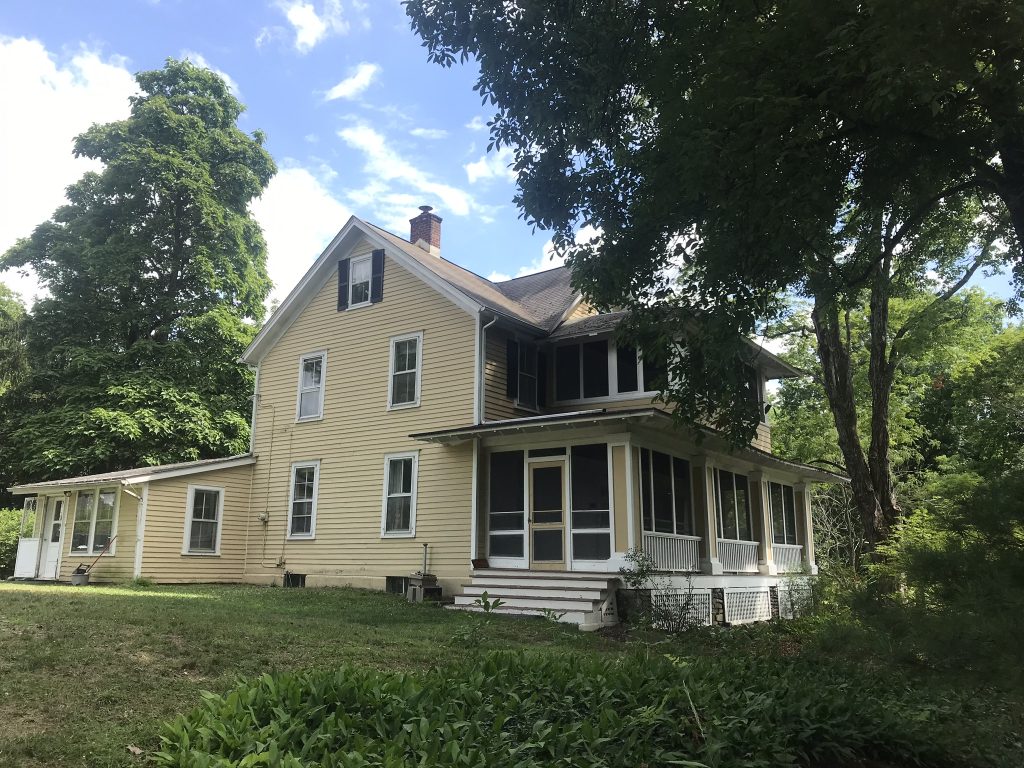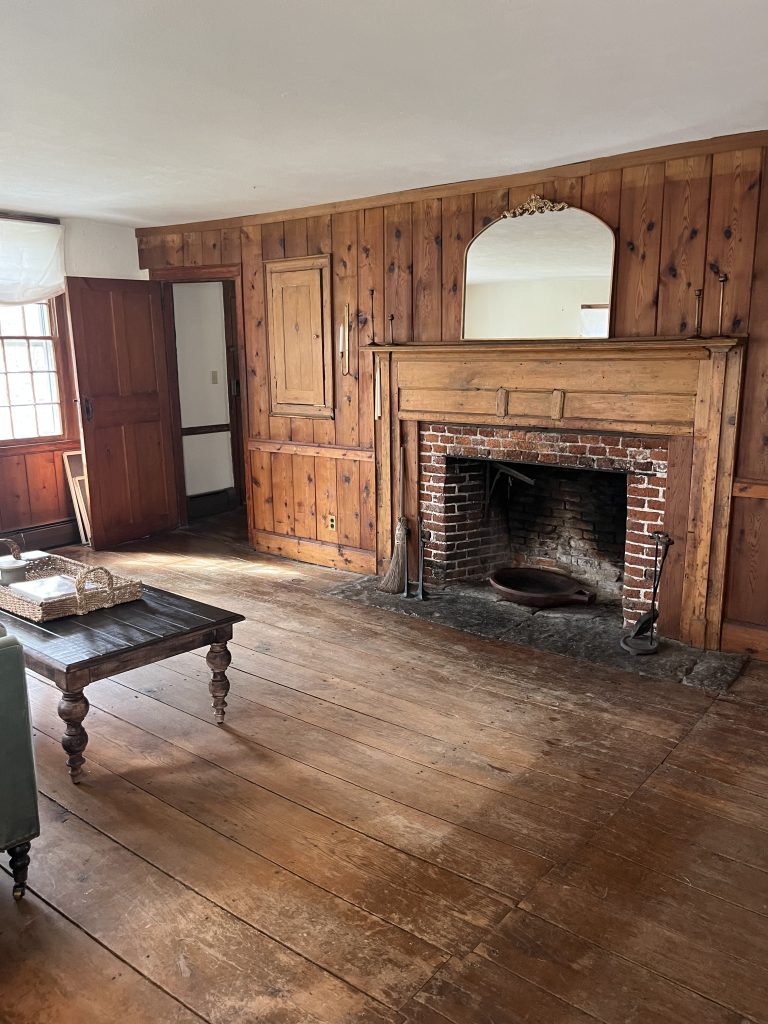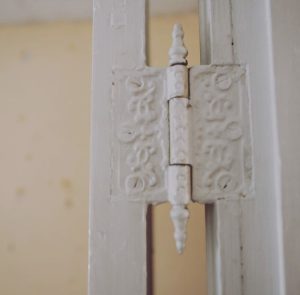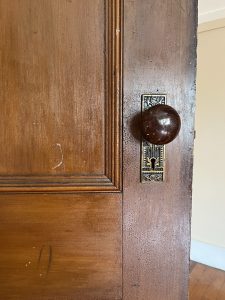Congratulations! You’ve purchased a home that is 50, 100, 200(!) years old and brimming with special qualities. Maybe it’s the way the light filters through wavy-glass windows and warms the mellow wide-board floors. Or the smooth feel of the banister, polished by generations of hands. Or specific features such as original beadboard built-ins, door knobs and light fixtures. Maybe it’s the coherent balance of the center-hall plan.
If you can’t quite put your fingers (you only have ten!) on what makes your house worth preserving, never fear! The guide below is for you.
Identifying Historic Character: A Three-Step Process
…those tangible architectural components that convey the building’s sense of time and place – that is, its historic character. (National Park Service “Preservation Brief #18”)
Step 1
Start with the exterior of the house.

What is its overall shape? Is it a simple box or a complex arrangement of heights and projections?
What notable features does it have?
What is the same or different in relation to other buildings in the neighborhood?
Specifically note features such as: roofs, chimneys, windows and doors, porches, decorative trim, and materials. All of these features are clues about the historic character, style and function of the house.
Step 2
Now that you’ve developed a feel for the overall character of the exterior, it’s time to experience the interior spaces.

Are there individual spaces that seem especially important? Clues might include size, decorative details, ceiling height, proportions, and location within the interior.
What are the differences between “primary” and “secondary” spaces?
Do some rooms seem to “speak” to one another through large openings, related materials, and continuous features like trim or flooring? Do you get a sense of progression from one space to another? Do some rooms feel compartmentalized and private?
Create an inventory of all features (no detail is too small!) that appear distinctive to you. Not all “historic” features are “original” – most houses have layers from different periods of their lives.

Try to keep an open mind and suspend judgment (for now) about what’s “ugly” or “beyond repair” or “functionally obsolete”. You’re simply gathering evidence to help develop the story of the house – its original design intent, how it may have evolved over time, what it looks like today.
Make note of features that seem “additive” (for example, walls that were inserted later) or “subtractive” (for example, details that have been removed).
Take lots of photos and measurements to document what you see.
Step 3
Finally, take a close look at the surface qualities of the interior materials – their color, texture, juxtaposition, craftsmanship and age. These subtle qualities send powerful signals. Without careful identification and treatment, they can be easily damaged or obscured in ways that undermine the overall character of the house.

It helps to know something about the history of materials and how they develop patina. But the most important thing is to pay attention and document what you see.
Describe the textures, notice how the materials relate to one another, and consider the craft that went into creating shadows and patterns.
Qualities like these are difficult if not impossible to replicate. Once they’re gone, they’re gone.
A few final thoughts…
The Guide to Period Styles for Interiors by Judith Gura offers a deep dive into the history of interior design and may be helpful to put your house in context. I also keep A Field Guide to American Houses by Virginia McAlester and The Elements of Style (a great encyclopedia of architectural details) at my fingertips.
There is likely a local historical society to approach for advice on researching the history of the house and surrounding area for a better understanding of the lives that shaped its design. My blog post, “How to Research Your House”, also provides tips.
I’m here to help! Please don’t hesitate to contact me for advice on anything in this guide and beyond.
 KATE WOOD grew up criss-crossing the country in the family’s Volkswagen Bus, visiting house museums, battlefields, Main Streets, and national parks. Today, she is an award-winning preservationist, real estate broker and principal of the full-service historic rehabilitation consulting firm, Worth Preserving. Kate believes in the essential value of old-building stewardship to sustain community character. For her, each property is a cause and each client a fellow advocate. She specializes in matching people with properties, skilled contractors, historic tax credits and other benefits to support top-tier rehabilitation projects. For advice and solutions to help unlock the potential of your old house join My Newsletter.
KATE WOOD grew up criss-crossing the country in the family’s Volkswagen Bus, visiting house museums, battlefields, Main Streets, and national parks. Today, she is an award-winning preservationist, real estate broker and principal of the full-service historic rehabilitation consulting firm, Worth Preserving. Kate believes in the essential value of old-building stewardship to sustain community character. For her, each property is a cause and each client a fellow advocate. She specializes in matching people with properties, skilled contractors, historic tax credits and other benefits to support top-tier rehabilitation projects. For advice and solutions to help unlock the potential of your old house join My Newsletter.
